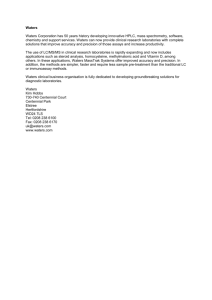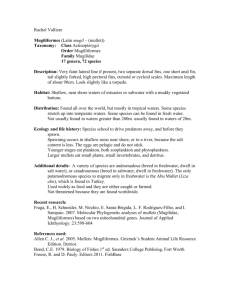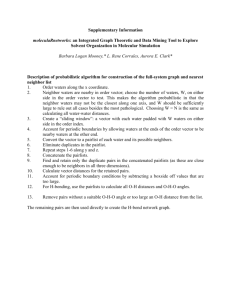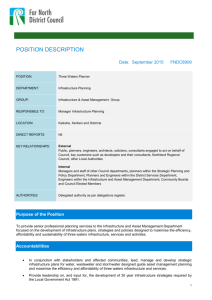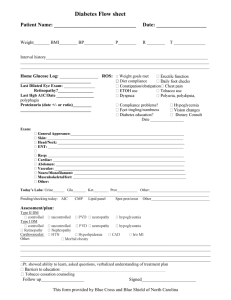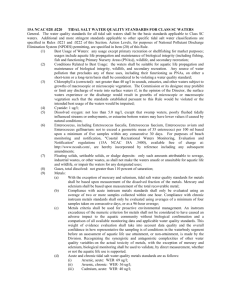ALASKA WATERS DECISION TREE
advertisement
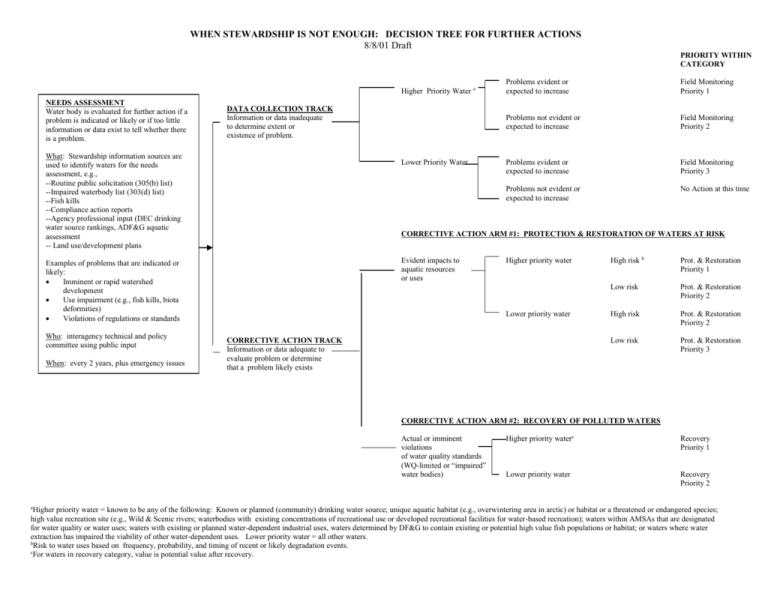
WHEN STEWARDSHIP IS NOT ENOUGH: DECISION TREE FOR FURTHER ACTIONS 8/8/01 Draft PRIORITY WITHIN CATEGORY Higher Priority Water a NEEDS ASSESSMENT Water body is evaluated for further action if a problem is indicated or likely or if too little information or data exist to tell whether there is a problem. DATA COLLECTION TRACK Information or data inadequate to determine extent or existence of problem. What: Stewardship information sources are used to identify waters for the needs assessment, e.g., --Routine public solicitation (305(b) list) --Impaired waterbody list (303(d) list) --Fish kills --Compliance action reports --Agency professional input (DEC drinking water source rankings, ADF&G aquatic assessment -- Land use/development plans Lower Priority Water When: every 2 years, plus emergency issues Field Monitoring Priority 1 Problems not evident or expected to increase Field Monitoring Priority 2 Problems evident or expected to increase Field Monitoring Priority 3 Problems not evident or expected to increase No Action at this time CORRECTIVE ACTION ARM #1: PROTECTION & RESTORATION OF WATERS AT RISK Evident impacts to aquatic resources or uses Examples of problems that are indicated or likely: Imminent or rapid watershed development Use impairment (e.g., fish kills, biota deformities) Violations of regulations or standards Who: interagency technical and policy committee using public input Problems evident or expected to increase Higher priority water Lower priority water CORRECTIVE ACTION TRACK Information or data adequate to evaluate problem or determine that a problem likely exists High risk b Prot. & Restoration Priority 1 Low risk Prot. & Restoration Priority 2 High risk Prot. & Restoration Priority 2 Low risk Prot. & Restoration Priority 3 CORRECTIVE ACTION ARM #2: RECOVERY OF POLLUTED WATERS Actual or imminent violations of water quality standards (WQ-limited or “impaired” water bodies) a Higher priority waterc Recovery Priority 1 Lower priority water Recovery Priority 2 Higher priority water = known to be any of the following: Known or planned (community) drinking water source; unique aquatic habitat (e.g., overwintering area in arctic) or habitat or a threatened or endangered species; high value recreation site (e.g., Wild & Scenic rivers; waterbodies with existing concentrations of recreational use or developed recreational facilities for water-based recreation); waters within AMSAs that are designated for water quality or water uses; waters with existing or planned water-dependent industrial uses, waters determined by DF&G to contain existing or potential high value fish populations or habitat; or waters where water extraction has impaired the viability of other water-dependent uses. Lower priority water = all other waters. b Risk to water uses based on frequency, probability, and timing of recent or likely degradation events. c For waters in recovery category, value is potential value after recovery.


